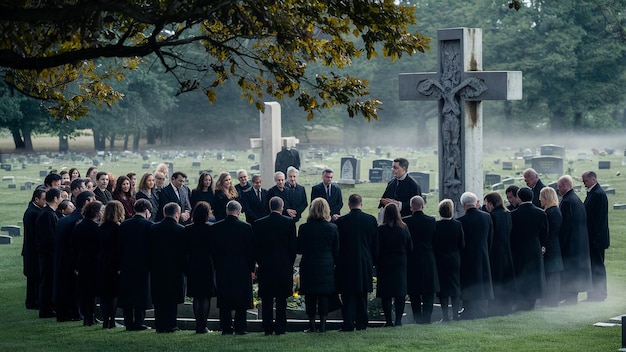Foreign Film Remakes: 5 American Adaptations Critically Analyzed

Foreign film remakes have become a staple in American cinema, offering fresh perspectives or sometimes falling short of their original counterparts; this analysis examines five such adaptations, exploring their successes and failures.
The allure of international cinema often leads Hollywood to explore and adapt foreign films for American audiences. While some remakes capture the essence and charm of the originals, others often struggle to replicate the cultural nuances and storytelling finesse. This article provides a Foreign Film Remakes: A Critical Analysis of 5 American Adaptations, examining the strengths and weaknesses of these cinematic translations.
The Art of Adaptation: A Delicate Balance
Adapting a foreign film for an American audience is a process fraught with challenges. It requires a deep understanding of both cultures, a keen eye for translating narrative nuances, and a willingness to depart from the source material while maintaining its core spirit. This balance is often difficult to achieve, leading to mixed results in the world of foreign film remakes.
Cultural Sensitivity vs. Americanization
One of the biggest hurdles in adapting a foreign film is navigating the cultural differences between the original and the target audience. Often, elements that resonate deeply with one culture may be lost or misinterpreted in another. This can lead to filmmakers making changes that “Americanize” the story, sometimes to the detriment of its original intent.
The Role of the Director
The director plays a pivotal role in shaping the success of a foreign film remake. A director who is both respectful of the source material and capable of injecting their own creative vision can often create a compelling adaptation. However, a director who is either too slavish to the original or too dismissive of it may end up with a film that fails to capture the magic of either.
- Maintaining the original film’s cultural context is crucial.
- Directors must balance loyalty to the source material with creative interpretation.
- Americanization can dilute the unique elements of the original.
Ultimately, the art of adaptation lies in striking a balance between honoring the source material and making it accessible to a new audience. It is a delicate process that requires sensitivity, creativity, and a deep understanding of both cultures involved. Only then can a foreign film remake truly succeed.
“The Departed” (2006): A Crime Saga Transformed
“The Departed,” directed by Martin Scorsese, is an American remake of the Hong Kong film “Infernal Affairs” (2002). Both films delve into the intertwined lives of an undercover cop and a mole within the police force, but Scorsese’s adaptation brings the story to the gritty streets of Boston, adding a distinct American flavor.
From Hong Kong to Boston: Setting the Stage
The change in setting from Hong Kong to Boston is a significant aspect of “The Departed.” Scorsese uses the backdrop of Boston’s Irish-American mob scene to create a sense of authenticity and danger that permeates the entire film. The cultural nuances and the unique character of Boston add depth and complexity to the narrative.
Scorsese’s Touch: Intensity and Performances
Scorsese’s direction is a key factor in the success of “The Departed.” His signature style, characterized by intense pacing, raw violence, and a palpable sense of tension, elevates the film beyond a simple remake. The performances of the cast, including Leonardo DiCaprio, Matt Damon, and Jack Nicholson, are also instrumental in making the film a critical and commercial success.
- Scorsese’s direction brings a unique intensity to the remake.
- The change in setting from Hong Kong to Boston adds a new layer of authenticity.
- The performances of the lead actors are universally praised.
In conclusion, “The Departed” is a successful example of a foreign film remake that manages to capture the essence of the original while also forging its own identity. Scorsese’s direction, the change in setting, and the stellar performances all contribute to making it a standout in the genre.
“Vanilla Sky” (2001): Dreams and Realities Blurred
“Vanilla Sky” is an American remake of the Spanish film “Abre los Ojos” (1997), both directed by Alejandro Amenábar. The film explores themes of identity, reality, and love. This adaptation attempts to bring a more Hollywood-centric approach to the complex narrative of its source material.
Lost in Translation: Simplifying Complexity
One of the main criticisms of “Vanilla Sky” is that it simplifies the complex narrative of “Abre los Ojos.” The original film is known for its ambiguous and surreal elements, which leave the audience questioning what is real and what is not. “Vanilla Sky,” in contrast, tends to provide clearer explanations, which some critics argue diminishes the film’s intellectual depth.
Performances and Visuals: A Modern Take
Despite the criticisms, “Vanilla Sky” does offer some strengths. The performances of the cast, including Tom Cruise, Penélope Cruz, and Cameron Diaz, are generally well-received. The film also features stunning visuals, which create a dreamlike atmosphere that complements the narrative’s themes. The soundtrack is also a notable strength, adding emotional depth to the scenes.
- The simplification of the narrative is a major point of contention.
- The performances of the cast are generally well-received.
- The film’s visuals and soundtrack are notable strengths.
“Vanilla Sky” has a hard time living up to its predecessor and can be considered as an interesting, though critically debated, attempt to adapt a complex foreign story for a broader audience. While it boasts strong performances and visuals, its simplification of the original narrative left many viewers wanting more.
“Death at a Funeral” (2010): Comedy Across Cultures
“Death at a Funeral” is the American adaptation of the 2007 British film of the same name. While the original is a masterclass in British humor, the American remake, with a predominantly Black cast, brings a new cultural dynamic to the slapstick humor and awkward family dynamics.
Humor in Translation: Adapting for a New Audience
The challenge in remaking “Death at a Funeral” lies in adapting the humor. British humor is often subtle and filled with sarcasm, while American humor tends to be more overt and exaggerated. The American remake successfully translates the humor by emphasizing physical comedy and relatable family situations, while adding a distinct cultural flavor.
Casting and Performances: A Fresh Take
The casting of the American remake is a significant departure from the original. With a predominantly Black cast, the film explores themes of family, identity, and cultural expectations through a different lens. The performances of the actors, including Chris Rock, Martin Lawrence, and Tracy Morgan, are energetic and add a unique comedic flair to the story. The dynamic amongst the cast makes up for the less than stellar plot line.

- American humor is more overt than British humor.
- The casting of the American remake adds a distinct cultural flavor.
- Energetic performance by the cast.
In summary, the success of the American “Death at a Funeral” lies in its ability to adapt the source material’s humor, adapting it to a new audience. The casting choices infused the well known themes with a breath of fresh air, resulting in an entertaining and funny take.
“Let Me In” (2010): A Chilling Tale Retold
“Let Me In” is an American remake of the Swedish film “Let the Right One In” (2008), which is based on the novel of the same name by John Ajvide Lindqvist. The film explores themes of loneliness, bullying, and the search for connection, set against a backdrop of chilling horror.
Staying True to the Source Material
One of the strengths of “Let Me In” is its commitment to staying true to the source material. The film closely follows the plot, themes, and tone of the original, retaining the haunting atmosphere and emotional depth that made “Let the Right One In” so compelling. This commitment to authenticity is appreciated by fans of the original, who often find remakes to be disappointing departures.
Performances and Atmosphere: Capturing the Chills
The performances of the two young leads in “Let Me In,” Kodi Smit-McPhee and Chloë Grace Moretz, are remarkable. They capture the vulnerability and complexity of their characters, conveying the loneliness and desperation that drive their actions. The film’s atmosphere is also effectively chilling, creating a sense of dread and unease that permeates every scene. The gloomy weather makes the setting much more effective.
- The film’s commitment to staying true to the source material is a major strength.
- The performances of the young actors are particularly noteworthy.
- The film’s chilling atmosphere adds to its impact.
In conclusion, “Let Me In” is a well-crafted remake that is true to its predecessor. The performances, coupled with the chilling atmosphere, make it successful within the genre. It exemplifies an effective remake within the horror genre.
“The Birdcage” (1996): A Comedy of Errors Across Cultures
“The Birdcage” is an American remake of the French film “La Cage aux Folles” (1978), directed by Édouard Molinaro. Both films explore themes of family, identity, and acceptance, set against the backdrop of a flamboyant and colorful world of drag performance. The American remake brings a distinctly American sensibility to the story, while retaining the heart and humor of the original.
Adapting Humor and Heart
One of the key challenges in remaking “La Cage aux Folles” was adapting the humor for an American audience. The original film is known for its witty dialogue, slapstick comedy, and satirical commentary on social norms. “The Birdcage” successfully translates these elements, while adding its own unique comedic touches, thanks to the performances of Robin Williams and Nathan Lane.
Casting and Performances: A Perfect Match
The casting of “The Birdcage” is one of its greatest strengths. Robin Williams and Nathan Lane are perfectly cast as the gay couple at the center of the story, bringing warmth, humor, and chemistry to their roles. The supporting cast, including Gene Hackman and Dianne Wiest, also deliver memorable performances, adding depth and complexity to the ensemble.
- The adaptation of humor is successful due to the delivery of Robin Williams and Nathan Lane.
- The casting choices lead to a memorable and unique performance.
- The themes help ground an otherwise satirical plot line.
To summarize, “The Birdcage” is not just a remake but a celebration of acceptance, blending humor with heart. The performances from the cast are commendable and the film manages to adapt it’s predecessors humor to an American audience.
| Key Aspect | Brief Description |
|---|---|
| 🎬 Cultural Adaptation | Successfully translating foreign narratives for American audiences. |
| 🎭 Casting Choices | Impact of casting on performance and cultural representation. |
| ⚖️ Balancing Originality | Maintaining the essence of the original film while adding a fresh perspective. |
| 🌟 Overall Impact | Influence and reception of remakes on the film industry. |
Frequently Asked Questions
▼
A successful remake respects the source material while adapting it for new audiences. This includes cultural sensitivity, strong performances, and a clear vision from the director.
▼
Remakes offer familiar stories with potentially wider appeal to American audiences, reducing risk for studios. It’s also about introducing acclaimed stories to new demographics.
▼
Challenges include cultural differences, language barriers, and audience expectations. Maintaining the original film’s integrity while catering to a different market is key.
▼
Casting plays a crucial role. Actors must embody the essence of the characters while fitting the new cultural context, making it relatable and believable.
▼
The director is the creative helmsman, responsible for interpreting the original and shaping the remake’s vision. His leadership determines whether the remake honors or betrays the source material.
Conclusion
In conclusion, the landscape of foreign film remakes in American cinema is a mix of successes and failures. By examining five distinct adaptations, we’ve seen how cultural sensitivity, directorial vision, and casting choices play pivotal roles in determining whether a remake honors or diminishes its source material.





